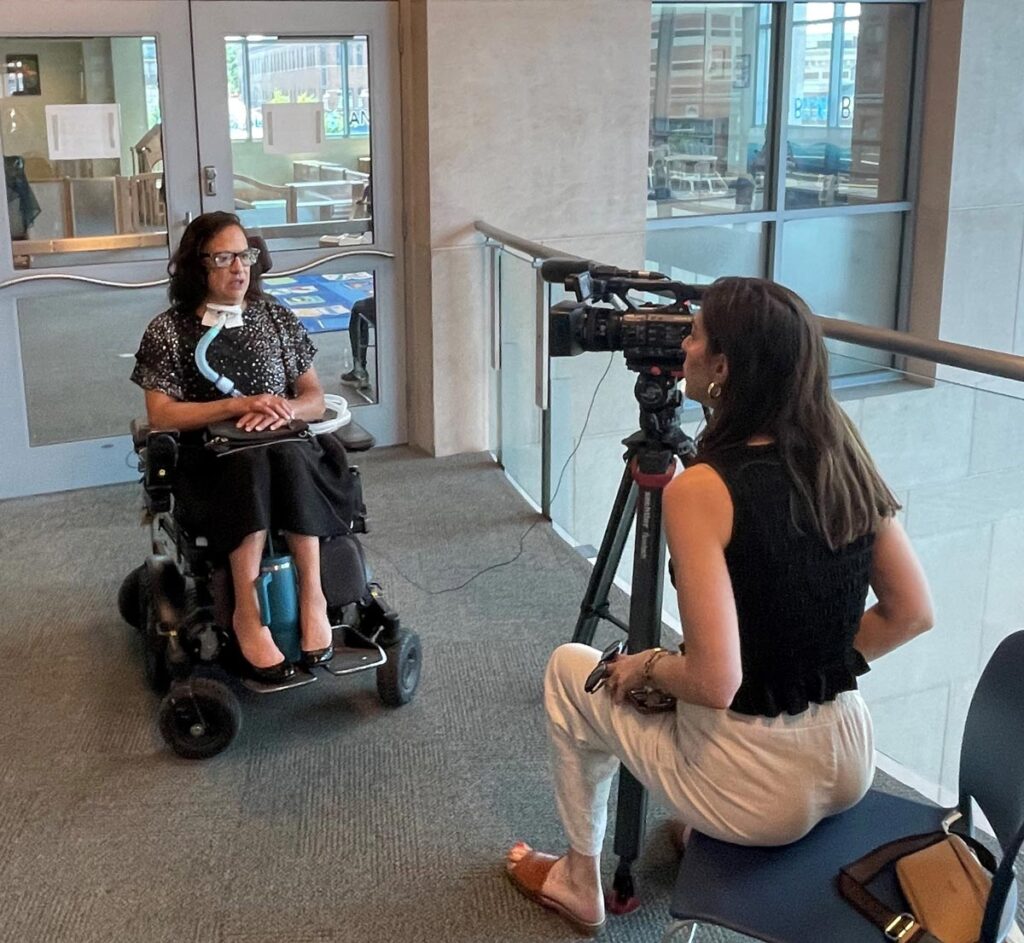
For those of you who could not attend the trial in the class action lawsuit against Lyft, here is a first-hand account of the trial’s first day on July 8 written by Donna Drumm.
Trial Day 1 – Morning session
The courtroom gallery was filled with supporters of WDOM and Harriet Lowell. Including Ms. Lowell, Executive Director Maria Samuels, and board members Phyllis Greenberg.
The trial kicked off with Jeremiah’s powerful opening statement. He passionately outlined the issues that the Plaintiffs intended to prove, highlighting the class action’s goal: to compel Lyft to provide wheelchair-accessible vehicles (WAVs) in all regions of the US where these services are currently unavailable. Jeremiah used screens to display each crucial point for the judge, Lyft’s lawyers, and the eager spectators, ensuring that everyone understood the stakes.
Lyft’s attorneys followed with their opening statement, arguing that it was both unknown and impossible for the company to provide WAVs to wheelchair users across the entire country. They pointed out that while Lyft does offer WAV services in about nine regions, there are many other areas where such services are not available. This discrepancy formed the crux of the litigation.
Jeremiah called the first witness, Donna Drumm. Her testimony would have explained how the app works for someone who needs to find a WAV. And how a Lyft driver could apply to join LYFT. Ms. Drumm did not testify because the Lyft lawyers chose not to cross-examine her. Meaning if they were not going to question her, there was technically no need for her to testify.
Jeremiah agreed and called the second witness, a woman who worked in the WAVs department at Lyft. She was a bit nervous and the judge took over questioning her about what exactly Lyft was doing to provide WAV services to regions that do not have accessible vehicles.
At 11:15 AM, the judge called for a break, allowing everyone to digest the morning’s events. The trial is scheduled to run until 5 PM each day, with a lunch break to ensure everyone stays sharp.
The first day of the trial was off to an electrifying start, setting the stage for what promises to be a landmark case in the fight for accessible transportation.